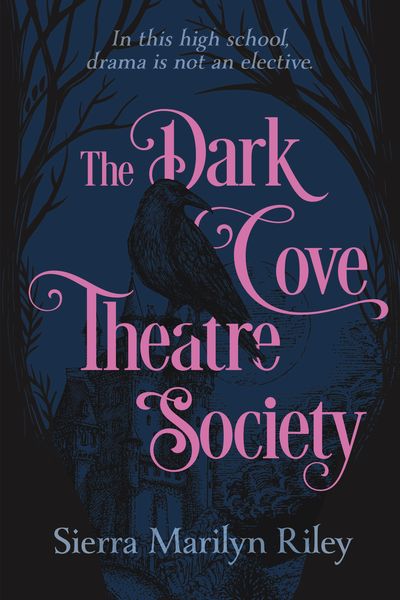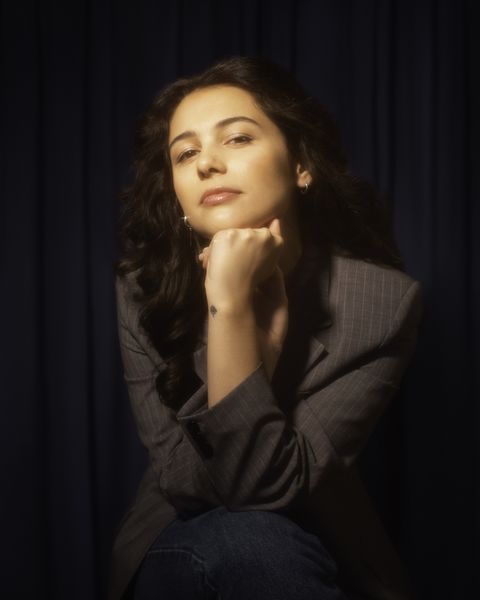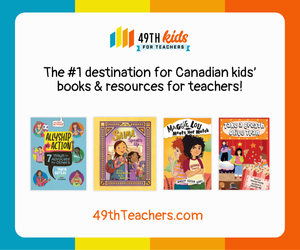Sierra Marilyn Riley on Her Debut Novel and Writing Queer Theatre Magic for Teens
Tense, atmospheric, and irresistibly dramatic, The Dark Cove Theatre Society by Sierra Marilyn Riley pulls back the velvet curtain on ambition and the high price of artistic perfection. Set in an elite arts boarding school where talent is currency and secrets run deep, this gothic YA debut follows Violet Costantino, a young actor struggling to rebuild her confidence after a panic attack nearly derailed her dreams. When she’s unexpectedly cast as a lead in the school’s notorious Halloween production, Violet is forced back into the spotlight she’s been avoiding, right alongside her ex-crush and her most dazzling rival.
As rehearsals unfold, Violet finds herself caught in the seductive glamour of the Dark Cove Theatre Society, where applause and acclaim mask dark secrets and obsessions. Whispers of a long-standing curse haunt the cast, claiming one member every year before opening night. The deeper Violet is drawn into the performance, the harder it becomes to tell where the script ends and real danger begins.
Riley’s debut is a captivating blend of psychological mystery and gothic allure, complete with secret letters, found documents, and stunning illustrations by Lily Huang that draw readers into the shadowy world of Dark Cove Academy. The Dark Cove Theatre Society is both a love letter to the stage and a chilling exploration of what happens when ambition and fear share the same spotlight.
Check out our Voices for Young Readers interview with the author right here!
Open Book:
Let’s start at the beginning: Where did the idea for this book come from, and how did the concept shift between your first draft and the final version?
Sierra Marilyn Riley:
The foundation of the idea—an anxious girl who is cast in A Midsummer Night’s Dream with a crush on a co-star—was autobiographical. I also played Hermia in my high-school production, and I had a huge crush on the guy playing Lysander. I wanted to take the fun drama of that experience and raise the stakes.
But unlike Violet, it wasn’t until after university that I really had an understanding of my own queer identity and experiences of mental illness. So, I wanted to write something for my teen self that would have helped her shed the shame she felt around all of that… also something that she would have been obsessed with—Twilight vibes (another Pacific Northwest-set love triangle), but more queer, and more theatre.
Originally, the book was going to have alternating perspectives between Violet and the ghost. The ghost was a bit more of a trickster, like Puck in A Midsummer Night’s Dream. There wasn’t a curse at all, and there was a character who had to be cut—definitely some difficult goodbyes and edits.
OB:
On the characters: Who felt like they practically wrote themselves onto the page, and who ended up surprising you the most as their story took shape?
Your CanLit News
Subscribe to Open Book’s newsletter to get local book events, literary content, writing tips, and more in your inbox
SMR:
Kay! Kay was so alive and clear in my mind from the get-go—their voice, their look, everything—and that was surprising to me as a writer. It felt like magic.
OB:
Building the world: How did you land on the setting for this book, and what kind of research or inspiration helped you shape its rules and details?
SMR:
I was based in the PNW when I first started writing this. I lived in Vancouver, spent a couple weekends on Bowen Island, took day trips to Deep Cove, and visited Portland for a month. I love so much about this part of the world—the ocean, the forests, and especially the crows. There are so many crows on the West Coast!
I used to spend mornings just watching them on the beach. They have such personalities. When I moved back to Toronto, it seemed a little too quiet. No croaks at my window in the morning! I was devastated to learn that the crow population took a massive hit from West Nile twenty-odd years ago. I miss those little guys.
The school setting was inspired by a fancy boys’ school that I worked at a couple of years before writing this book. I looked at real school handbooks to craft the rules of Dark Cove Arts Academy.
OB:
Plot twists and turns: Are you more of a meticulous outliner, or do you prefer to discover the story as you go? Were there any twists that even you didn’t see coming at first?
SMR:
I make a rough outline, because if I don’t know where I’m going, I tend to get lost and lose faith in my abilities to finish a project. That said, as I’m writing, I’ll usually adjust the outline and make changes that I discover are necessary along the way.
OB:
Writing life: What does your writing routine look like when you’re working on chapter books or novels?
SMR:
This is my first, and it looks different every day. I’ll usually start a project by mapping things out on paper and then migrate over to my laptop when I get to the writing part. Typically, I’m sitting down with a cup of coffee or tea either at home next to a window or in a café next to a window—the window is apparently essential for me.
OB:
Advice to the next generation: What would you say to a young reader who’s dreaming of writing their own stories?
SMR:
I was also a young reader who dreamt of writing their own stories! I still am, I guess, because I have more stories I want to write, and I still consider myself young. I would say the obvious thing: you can do it. Like, today. There’s someone out there who will love to read what you have inside your brain—probably me.
Stories can change the world, and there’s a lot of change we need to get done to make this world a safer, happier place for everyone.
____________________________________
Sierra Marilyn Riley is a queer Italian Canadian actor and writer. She previously worked as an editor at SAD Mag and an information assistant at Vaughan Public Libraries and St. George's School. These days, you can watch her on Hallmark’s Mistletoe Murders. She can also be found petting dogs in parks across Toronto.






